Attention Canadians Abroad 海外に住んでいるカナダ人へのお知らせ
Election time! 選挙だ!
 I was coming back from a school I dislike (although I actually had a good day there, so perhaps my opinion will change) a bit early, so I had time to explore. I saw this massive temple gate from the main road, so I went up to it to have a look. Apparently it was rebuilt a few years ago. I didn't go into the temple itself, though. To speak truthfully, I don't like temples. I much prefer shrines.
I was coming back from a school I dislike (although I actually had a good day there, so perhaps my opinion will change) a bit early, so I had time to explore. I saw this massive temple gate from the main road, so I went up to it to have a look. Apparently it was rebuilt a few years ago. I didn't go into the temple itself, though. To speak truthfully, I don't like temples. I much prefer shrines.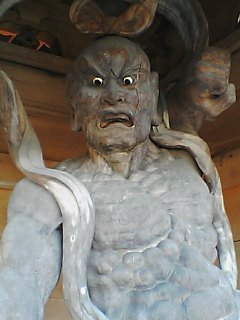 Inside both ... pillars? of the gate, there are Buddhist saints/gods to protect the interior. This guy might be Niou, the Benevolent King, making a scary face to prevent evil spirits from entering.
Inside both ... pillars? of the gate, there are Buddhist saints/gods to protect the interior. This guy might be Niou, the Benevolent King, making a scary face to prevent evil spirits from entering.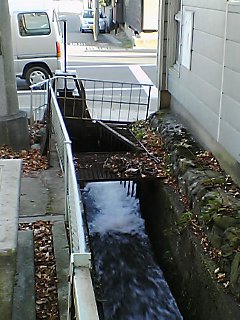 Damned if I know where it comes from (possibly mountain streams that were concreted over in the name of progress), but water tends to flow down these ditches.
Damned if I know where it comes from (possibly mountain streams that were concreted over in the name of progress), but water tends to flow down these ditches.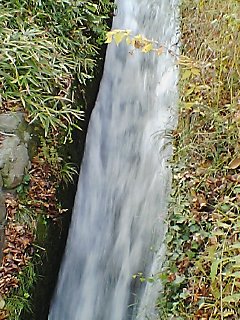 This particular one was very steep, and the water was rushing very fast.
This particular one was very steep, and the water was rushing very fast.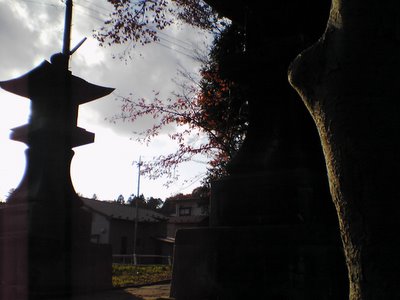 As the sun began to set, I entered the precincts of a shrine.
As the sun began to set, I entered the precincts of a shrine.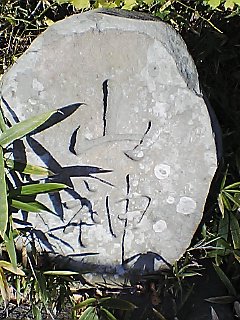 I wasn't sure what the shrine was dedicated to. A mountain god, perhaps?
I wasn't sure what the shrine was dedicated to. A mountain god, perhaps? Or perhaps snakes?
Or perhaps snakes? I would probably find my answer at the top.
I would probably find my answer at the top.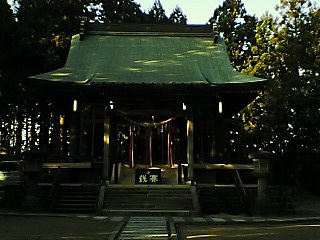 Imagine my surprise when I found this giant main building at the top! There was even a Shinto priest there, dressed in robes of white and purple, who happily told me that the shrine had been here for about six hundred years, although the main shrine of which this was just a division, had been founded by the Fifteenth Emperor, Oujin. The priest also used the Imperial Year dating system (counting years from the traditional founding of Japan by Emperor Jinmu; Imperial Year 2600 was in 1940.) when he told me this. Cool. After seeing the previous signs on the way up the hill, I asked what god the shrine was dedicated to. He laughed and said all of them. It's all under Amaterasu's dominion anyway.
Imagine my surprise when I found this giant main building at the top! There was even a Shinto priest there, dressed in robes of white and purple, who happily told me that the shrine had been here for about six hundred years, although the main shrine of which this was just a division, had been founded by the Fifteenth Emperor, Oujin. The priest also used the Imperial Year dating system (counting years from the traditional founding of Japan by Emperor Jinmu; Imperial Year 2600 was in 1940.) when he told me this. Cool. After seeing the previous signs on the way up the hill, I asked what god the shrine was dedicated to. He laughed and said all of them. It's all under Amaterasu's dominion anyway. Biking back to the Board of Education, I saw this sign. Sounds like a 50's horror movie of sorts.
Biking back to the Board of Education, I saw this sign. Sounds like a 50's horror movie of sorts.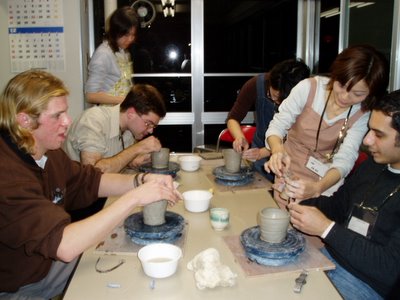 A few days ago there was an International Thing at the place I teach English at on Monday night. It was designed to Teach Japanese Culture to the Foreigners, and consisted mostly of Brazilians. Omar, Joshua and I also participated, making pottery where I attempted to create a teacup that would fall within the Wabi style.
A few days ago there was an International Thing at the place I teach English at on Monday night. It was designed to Teach Japanese Culture to the Foreigners, and consisted mostly of Brazilians. Omar, Joshua and I also participated, making pottery where I attempted to create a teacup that would fall within the Wabi style.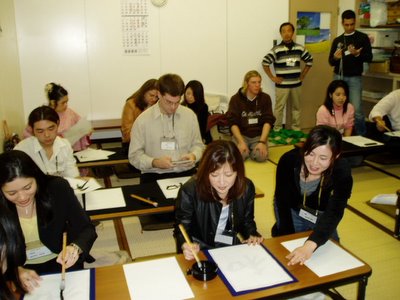 There was also some shodou (yay!), where everyone wrote Harmony, but I, with imperial ambitions, wrote Country. The funny thing is, I kept on switching between pronunciations, alternating between kuni and koku but mostly using guo.
There was also some shodou (yay!), where everyone wrote Harmony, but I, with imperial ambitions, wrote Country. The funny thing is, I kept on switching between pronunciations, alternating between kuni and koku but mostly using guo. 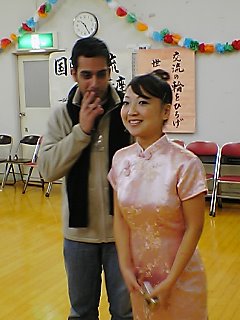 I also met the Chinese teacher, a naturalised Chinese woman whose classes I wish I could take, but they always occur on days when I am busy. The Japanese girls also dressed up in Chinawear. Here Omar works his magic.
I also met the Chinese teacher, a naturalised Chinese woman whose classes I wish I could take, but they always occur on days when I am busy. The Japanese girls also dressed up in Chinawear. Here Omar works his magic.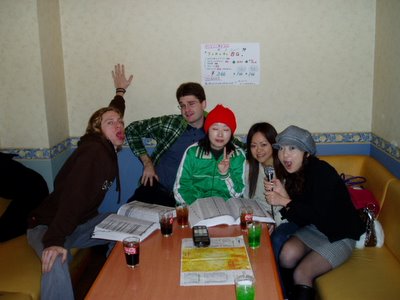 The next day we all went to karaoke. For some reason I think Chibi Aya (right) looks like a fish with that face.
The next day we all went to karaoke. For some reason I think Chibi Aya (right) looks like a fish with that face.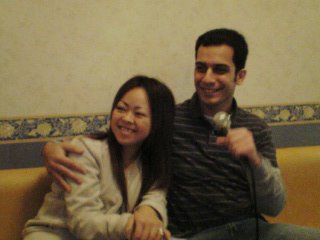 Of course, when no-one suspected, Omar went at it again.
Of course, when no-one suspected, Omar went at it again.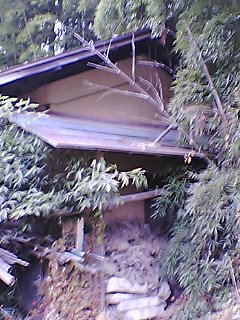 On the road to the Board of Education, I found another kura abandoned in the woods, next to a rice field. I wonder who owns it; I'd love to take a look inside.
On the road to the Board of Education, I found another kura abandoned in the woods, next to a rice field. I wonder who owns it; I'd love to take a look inside. Usually I pass by this pillar, but that day I had time and decided to explore. I went onto a small road and attempted to find the Kashihara Shrine that this pillar points the way to.
Usually I pass by this pillar, but that day I had time and decided to explore. I went onto a small road and attempted to find the Kashihara Shrine that this pillar points the way to. After a short jaunt I found it.
After a short jaunt I found it. Inside, there were cute instructions on washing your hands.
Inside, there were cute instructions on washing your hands.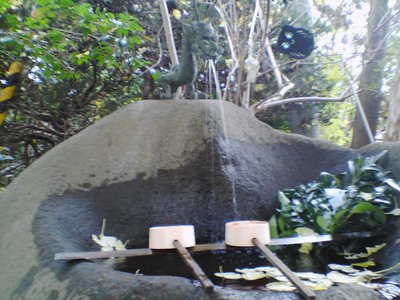 The basin had a dragon perched on top spewing water, akin to The Hall of Two Moons in Nara.
The basin had a dragon perched on top spewing water, akin to The Hall of Two Moons in Nara.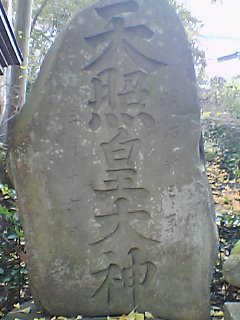 While I was looking at the giant stone pillar celebrating Amaterasu, who should appear but the same Shinto priest from Hachiman Jinja! Just a quick hello this time though.
While I was looking at the giant stone pillar celebrating Amaterasu, who should appear but the same Shinto priest from Hachiman Jinja! Just a quick hello this time though. In front of the bell at the main shrine were instructions on proper praying. Turns out I've been doing it wrong the whole time.
In front of the bell at the main shrine were instructions on proper praying. Turns out I've been doing it wrong the whole time. One cool thing I found in the shrine (partly because there was nobody there to stop me) was a god village. Anyone remember Spirited Away? God houses ... Cool. Must be fun at night.
One cool thing I found in the shrine (partly because there was nobody there to stop me) was a god village. Anyone remember Spirited Away? God houses ... Cool. Must be fun at night.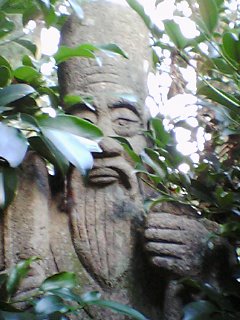 I found this statue hidden behind some leaves. I wonder what god/saint it is?
I found this statue hidden behind some leaves. I wonder what god/saint it is? Apparently Emperor Meiji visited here a long time ago, and there are lots of stone markers strewn about. This one celebrates the 2600th Imperial Year.
Apparently Emperor Meiji visited here a long time ago, and there are lots of stone markers strewn about. This one celebrates the 2600th Imperial Year. Having seen all there was to see, I left the shrine and continued to the Board of Education. Along the way I found more stones. Graves or gods? Who knows.
Having seen all there was to see, I left the shrine and continued to the Board of Education. Along the way I found more stones. Graves or gods? Who knows.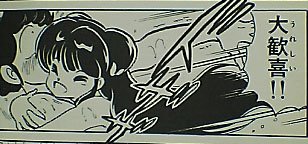 I've been reading a lot of Ranma recently. Gotta love Shanpu.
I've been reading a lot of Ranma recently. Gotta love Shanpu. I went to one school and saw that the fifth graders had put portraits of themselves up on the wall, much like I did in Grade 5. Except that they are much much better.
I went to one school and saw that the fifth graders had put portraits of themselves up on the wall, much like I did in Grade 5. Except that they are much much better. I then fulfilled my promise of getting a Chinese textbook for a student at a school with a Chinese friend. It's pretty cute. Unfortunately it uses katakana, but since the pinyin is also written I hope she will learn it the correct way.
I then fulfilled my promise of getting a Chinese textbook for a student at a school with a Chinese friend. It's pretty cute. Unfortunately it uses katakana, but since the pinyin is also written I hope she will learn it the correct way.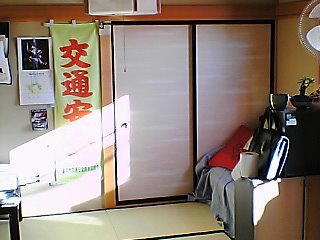 And I cleaned the apartment.
And I cleaned the apartment.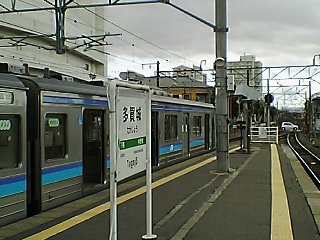 On Saturday, I went with Liz and Kira to Matsushima, an area of Sendai that was called one of Japan's three most beautiful places by the great poet Basho. To get there we rode a train, and I instantly felt like I was back in Tokyo, with the blue-striped JR train coming by ... just like the Keihin-Tohoku line.
On Saturday, I went with Liz and Kira to Matsushima, an area of Sendai that was called one of Japan's three most beautiful places by the great poet Basho. To get there we rode a train, and I instantly felt like I was back in Tokyo, with the blue-striped JR train coming by ... just like the Keihin-Tohoku line. Before going to Matsushima, however, we stopped at a place called Shiogama (salt pot). There, we went in search of a hill fort but found a huge shrine instead.
Before going to Matsushima, however, we stopped at a place called Shiogama (salt pot). There, we went in search of a hill fort but found a huge shrine instead. An amusing sign on the road to the shrine. It says "No throwing away cats! We are watching you!".
An amusing sign on the road to the shrine. It says "No throwing away cats! We are watching you!". There was a holy horse near the main entrance of the shrine! Kira proceeded to feed it carrots. 聖馬が神社の中央口に居た!キラがにんじんを食べさせた。
There was a holy horse near the main entrance of the shrine! Kira proceeded to feed it carrots. 聖馬が神社の中央口に居た!キラがにんじんを食べさせた。 A sign promoting Shichi-Go-San.
A sign promoting Shichi-Go-San.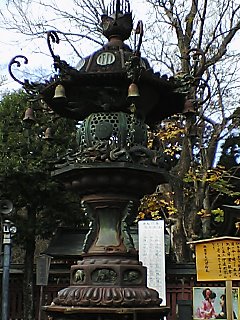 A creepy-looking lantern.
A creepy-looking lantern. This picture turned out nice, didn't it? Kind of like a postcard. Very Japanese.
This picture turned out nice, didn't it? Kind of like a postcard. Very Japanese.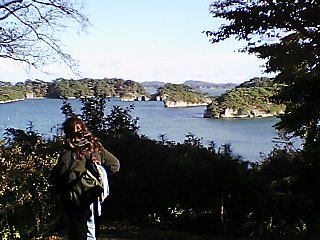 So eventually we left the shrine and took the ferry to Matsushima, which isn't one island but a bunch of small ones.
So eventually we left the shrine and took the ferry to Matsushima, which isn't one island but a bunch of small ones.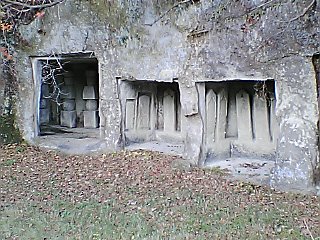 One island that we visited (there are bridges at the terminal port) had apparently been the site of a Buddhist temple. As such, there were lots of caves and ruins.
One island that we visited (there are bridges at the terminal port) had apparently been the site of a Buddhist temple. As such, there were lots of caves and ruins. This particular cave is actually a well, which made an odd sound when I dropped a coin into it. Maybe there's a bell at the bottom?
This particular cave is actually a well, which made an odd sound when I dropped a coin into it. Maybe there's a bell at the bottom?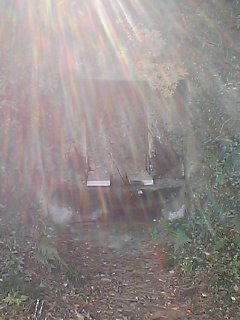 The Light of Buddha.
The Light of Buddha.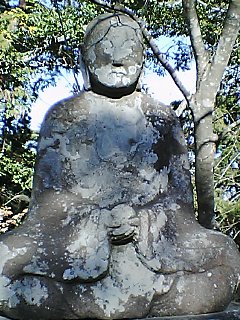



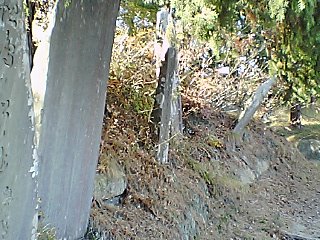
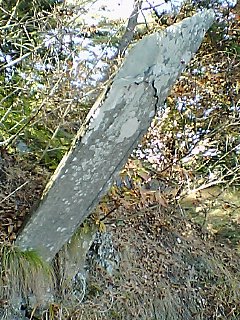



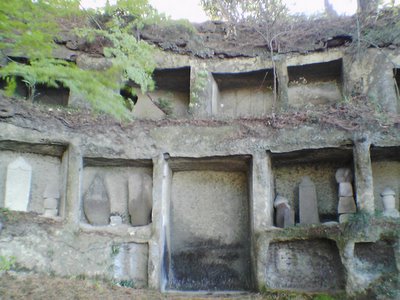
 These are pictures of the various statues and caves that make up the temple complex. 寺域で在る様々な石像と洞窟の写真だ。
These are pictures of the various statues and caves that make up the temple complex. 寺域で在る様々な石像と洞窟の写真だ。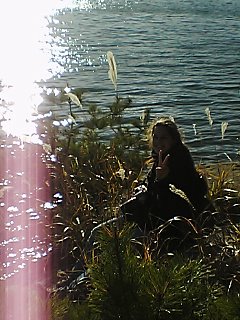 Buddha's light shines on Liz.
Buddha's light shines on Liz.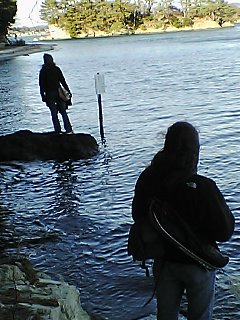 The girls ponder the meaning of life.
The girls ponder the meaning of life.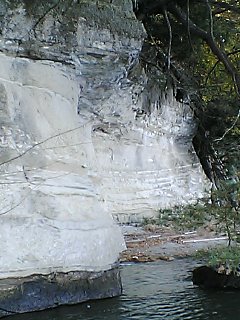 The cliffs of the island.
The cliffs of the island.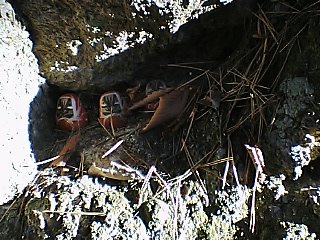 Somebody stuffed daruma into this crack in the stone.
Somebody stuffed daruma into this crack in the stone.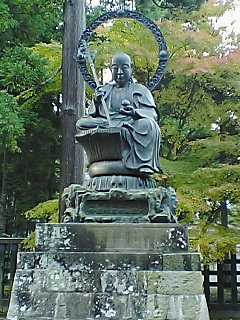 On our way back to the station we found another (lively) temple complex, but as it was getting late and there was an entrance fee we opted to do it another day.
On our way back to the station we found another (lively) temple complex, but as it was getting late and there was an entrance fee we opted to do it another day. Outside of Sendai Station there were a bunch of girls dancing! The weird thing is ... they were Japanese ... yet they could dance!
Outside of Sendai Station there were a bunch of girls dancing! The weird thing is ... they were Japanese ... yet they could dance!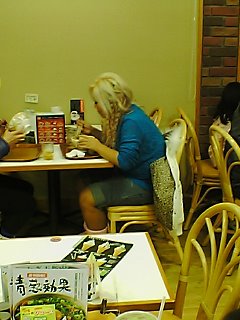 The day finished up with dinner at Sukiya and viewing a ganguro.
The day finished up with dinner at Sukiya and viewing a ganguro.